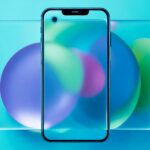- Kush Kaveh
- Digital Tools, Generative AI
- 0 Comments
- 311 Views
TL;DR: The design process is evolving faster than ever. Whether you’re building a website, crafting UX flows, or prototyping products, these 10 AI tools can make your workflow faster, smarter, and more intuitive. Here’s what’s worth using right now.
—
Why Designers Need AI in 2025
In 2025, design isn’t just about creativity—it’s about speed, personalization, and smart iteration.
AI doesn’t just automate—it enhances your ability to think, create, and ship better work. These tools aren’t here to replace you. They’re here to remove the repetitive stuff, spark ideas, and supercharge your process.
This list focuses on tools that:
- Save time
- Improve quality
- Amplify creativity
- Are actually useful for designers—not just hype
Let’s go.
—
1. Figma AI
- 🔗 https://www.figma.com/blog/introducing-figma-ai/
- What it does: Suggests layouts, autocompletes designs from prompts, streamlines wireframes, and even detects accessibility issues.
- Why it’s useful: Figma AI is integrated into your existing flow, so you can instantly prototype without context-switching.
- Best for: UI designers, product teams, brand designers
—
2. Uizard
- 🔗 https://uizard.io/
- What it does: Converts hand-drawn sketches or text prompts into interactive mockups and wireframes.
- Why it’s useful: You can go from idea to first draft in under 5 minutes.
- Best for: Founders, solo designers, UX workshops
—
3. Adobe Firefly
- 🔗 https://www.adobe.com/sensei/generative-ai/firefly.html
- What it does: Text-to-image, generative fill, smart recoloring, background removal—all in a designer-first UI.
- Why it’s useful: It’s Adobe-native and makes Photoshop and Illustrator much faster.
- Best for: Visual designers, brand creators, content producers
—
4. Galileo AI
- 🔗 https://www.usegalileo.ai/
- What it does: Generates beautiful UI components from plain text prompts.
- Why it’s useful: The visuals are production-grade. Great for fast mockups or client presentations.
- Best for: Freelancers, product designers, fast ideation sessions
—
5. Khroma
- 🔗 https://www.khroma.co/
- What it does: AI-powered color palette generator that learns your style and gives endless suggestions.
- Why it’s useful: You train it with colors you love, and it creates unique palettes that actually fit your aesthetic.
- Best for: Brand designers, web designers, illustrators
—
6. Fontjoy
- 🔗 https://fontjoy.com/
- What it does: AI-powered font pairing tool for UI and typography nerds.
- Why it’s useful: It creates harmony between fonts using deep learning—not guesswork.
- Best for: UI/UX designers, editorial design, landing pages
—
7. RunwayML
- 🔗 https://runwayml.com/
- What it does: Real-time video editing, image generation, background removal, and more—all powered by generative AI.
- Why it’s useful: Cuts hours off motion and video design. Especially great for social content.
- Best for: Content creators, motion designers, social video editors
—
8. ChatGPT + GPTs for Designers
- 🔗 https://chat.openai.com/gpts
- What it does: Brainstorm UX copy, write microinteractions, generate personas, or structure case studies.
- Why it’s useful: It’s like a creative assistant who never sleeps. Use GPTs like “Design Assistant” or create your own.
- Best for: UX writers, strategists, multi-hyphenates
—
9. Notion AI
- 🔗 https://www.notion.so/product/ai
- What it does: Instantly outlines project plans, generates UX documentation, helps write design specs.
- Why it’s useful: Integrated directly into Notion—no context switching.
- Best for: Product teams, UX strategists, design managers
—
10. Midjourney
- 🔗 https://www.midjourney.com/
- What it does: Text-to-image generation with an aesthetic edge. Great for concept art, style explorations, or moodboards.
- Why it’s useful: Midjourney creates visuals that feel less “stock” and more “designed.”
- Best for: Concept designers, brand stylists, art directors
—
Bonus: Tools on the Rise
- Relume Library – AI wireframe-to-website builder
- Genius by Diagram – AI that suggests UI improvements inside Figma
- Vercel v0 – React component generation from plain English
- Locofy.ai – Turn Figma designs into clean React code
—
How I Personally Use These
I don’t use every tool every day—but here’s how I integrate them:
- Figma AI for layout drafts and quick UX flows
- ChatGPT to shape UX copy or outline case studies
- Notion AI to summarize meeting notes into action plans
- Midjourney to generate moodboards or pitch concepts
The key isn’t just using AI tools—it’s knowing where they fit in your process. Use them to remove blockers, not your own intuition.
—
Final Thoughts
The best AI tools for designers are the ones that:
- Reduce busywork
- Make creativity easier to start
- Give you superpowers—not just shortcuts
Try a few. Don’t get overwhelmed. The goal isn’t to be perfect—it’s to work smarter.
Have a favorite tool that I missed? I’d love to hear from you. Drop me a message or DM on Twitter or LinkedIn or simply Contact me


